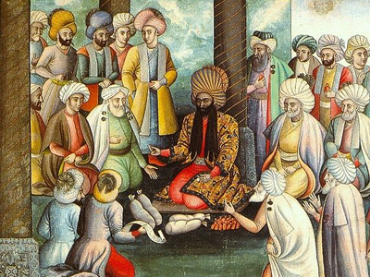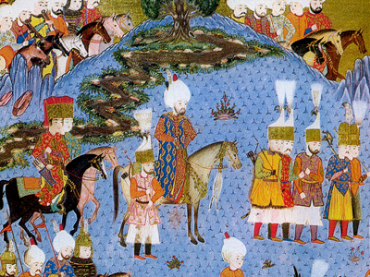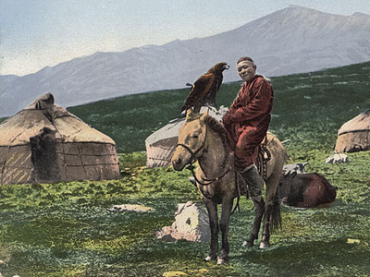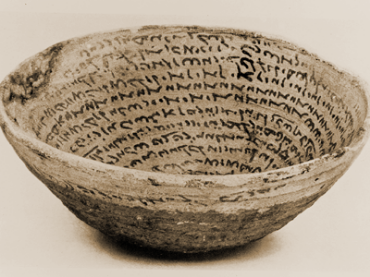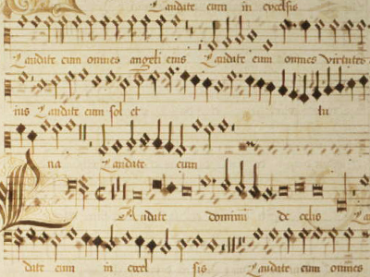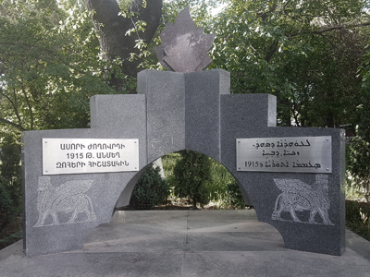History
Sequential or Direct Ordination?
A return to the Sources
Series: Kiraz Liturgical Studies 53
ISBN: 978-1-60724-404-2
In the Anglican Communion, the medieval practice, which certainly had some earlier roots, continued—that ordination came to any one individual in this 'sequence': deacon, presbyter, bishop. The Anglican ordinal was so committed to this pattern at the Reformation that Cranmer's text prayed that deacons 'may so well use themselves in this inferior office, that they may be found worthy to be called unto higher ministries in thy Church.' Latterly, however, Anglicans have not only sought to develop the calling of a deacon in his or her own right, but have in some places and cases promoted the idea that the true calling of a deacon and of a presbyter would be best clarified by a separate 'direct' ordination. John Gibaut, a liturgical theologian of the Anglican Church of Canada, presents the case for 'direct' ordination—rooting it in the patristic era, and spelling out its implications in the present day.
$138.00
Infant Communion
The New Testament to the Reformation
By Mark Dalby
Series: Kiraz Liturgical Studies 54
ISBN: 978-1-60724-405-9
The communion of infants is different from the admission of children at, say, seven or eight. Both practices traditionally require baptism, and either may require confimation/chrysmation as well. But infant communion never requires a measure of 'understanding', whereas child communion does. As yet there is no comprehensive history of infant communion. Several learned attempts were made during the seventeenth and eighteenth centuries, but there were major gaps in their treatment and much that today needs amending. Thanks to the work of JDC Fisher and DR Holeton, many of these gaps have now been filled. I have drawn significantly on their work, as well as on an article of my own in CQR in 1966, but I have also sought to fill in more of the gaps.
$138.00
Liturgical Revision in the Church of England 1984-2004
The working of the Liturgical Commission
Series: Kiraz Liturgical Studies 55
ISBN: 978-1-60724-406-6
The liturgy of the Church of England is primarily located in The Book of Common Prayer (1662), but from the mid-20th century it has been enriched and supplemented by a range of authorized alternative services. Most of these were initially collected in The Alternative Service Book 1980 (ASB). From 1986 to 2005 there was a comprehensive revision and enlargement in the scope of alternative services. These, combined with the main elements of the 1662 tradition, are now published in Common Worship. The planning, drafting and processing of this work lay with the Liturgical Commission of the Church of England, and JLS 57 charts the separate but interlocking processes which this involved from the perspective of the Commission's Secretary and chronicler throughout the period 1984-2002.
$138.00
A Liturgical Glossary
Compiled by Michael Sansom
Series: Kiraz Liturgical Studies 59
ISBN: 978-1-60724-351-9
Liturgy is a subject which very quickly throws up a barrage of unfamiliar words to defeat the student, the lay enquirer—and even a good many clergy. The basis of this glossary was a simple word list compiled for students in the Cambridge Federation of Theological Colleges, but it has been expanded and rewritten by students at Ridley Hall.
$138.00
Liturgies of the Spanish and Portuguese Reformed Episcopal Churches
Edited by Colin Buchanan
Series: Kiraz Liturgical Studies 60
ISBN: 978-1-60724-352-6
The liturgies of the Spanish Reformed Episcopal Church and the Lusitanian Church are presented here and introduced by a bishop of the Anglican communion.
$138.00
Fourth Century Anaphoral Construction Techniques
By John Fenwick
Series: Kiraz Liturgical Studies 61
ISBN: 978-1-60724-353-3
The origins, methodologies, and uses of the Anaphoras of Sts. Basil and James are explored, along with examples.
$138.00
The Medieval Development of Liturgical Symbolism
By Paul Rorem
Series: Kiraz Liturgical Studies 62
ISBN: 978-1-60724-355-7
Liturgical allegory has often flourished in the history of Christianity, despite persistent pruning by sceptical theologians through the ages. The full fruits of this growth ripened during the Middle Ages, as preserved in the pages of Latin and Byzantine liturgical commentaries.
$138.00
Conflictos, negociaciones y comercio durante las guerras de independencia latinoamericanas
Series: Conflict and Trade 3
ISBN: 978-1-61143-000-4
En este libro se analizan los conflictos y las negociaciones que transformaron las modalidades del comercio en América Latina durante las llamadas guerras de la independencia tanto de sus rasgos comunes como de la variedad de situaciones regionales
$192.00
Law Code of the Kretan Gortyna (I and II)
Series: Analecta Gorgiana 202
ISBN: 978-1-60724-431-8
A discussion of the Gortyn law code, one of the earliest known in the Greek world. This is an edition, translation and commentary on the Gortyn law code with introduction.
$41.00
Egyptian Origin of the Ionic Capital and of the Anthemion
Series: Analecta Gorgiana 203
ISBN: 978-1-60724-432-5
An article tracing the development of the Ionic column from Egyptian lotus motifs through Assyrian rosettes and Cypriot pottery motifs.
$40.00
Discoveries in the Attic Deme of Ikaria, 1888
By Carl D. Buck
Series: Analecta Gorgiana 251
ISBN: 978-1-60724-480-6
Site report of the American School of Classical Studies in Athens (ASCSA) detailing the major finds and excavation of the Attic deme of Ikaria in Athens.
$54.00
Antiquities of Southern Phrygia and the Border Lands
By W. M. Ramsay
Series: Analecta Gorgiana 252
ISBN: 978-1-60724-481-3
Survey of finds and literary sources documenting the cities of imperial Roman Phrygia's borderlands.
$46.00
Gargara, Lamponia and Pionia: Towns of the Troad
Series: Analecta Gorgiana 253
ISBN: 978-1-60724-482-0
In the tradition of Schliemann's search for Troy, Clarke uses literary and topographic data to suggest site locations for the ancient cities of Gargara, Lampascus, and Pionia in the Troad.
$36.00
The Chorus in Later Greek Drama with Reference to the Stage Question
By Edward Capps
Series: Analecta Gorgiana 254
ISBN: 978-1-60724-483-7
Edward Capps addresses the problem of the movement of the dramatic chorus from its position in the orchestra during the 5th century BC to its elevated position above the actors in Vitruvius.
$39.00
Notes on Byzantine Art and Culture in Italy and Especially in Rome
Series: Analecta Gorgiana 255
ISBN: 978-1-60724-484-4
A. J. Frothingham discusses Byzantine influences in the art and architecture of medieval Rome, bringing to light the influence of Byzantium on Italy beyond the fall of the Western empire.
$44.00
Some Recent Results of the University of Pennsylvania Excavations at Nippur, Especially of the Templ
By John Peters
Series: Analecta Gorgiana 256
ISBN: 978-1-60724-485-1
The site report for the University of Pennsylvania's excavation of Nippur in Iraq. The detailed excavation report includes photographs, diagrams, and topographical map.
$50.00
Andokides
Series: Analecta Gorgiana 257
ISBN: 978-1-60724-486-8
A discussion of the works and school of Andokides, a famous Greek vase-painter of the 6th century active in the transitional period from black to red figure decoration.
$39.00
The epigraphic sources of the writings of Gaius Suetonius Tranquillus
Series: Analecta Gorgiana 258
ISBN: 978-1-60724-487-5
In this dissertation Dennison links the text of Suetonius to surviving epigraphical texts. This piece includes texts and commentaries and is an invaluable article for any study of Suetonius, particularly in a classroom setting.
$40.00
Athena Polias on the Acropolis of Athens
Series: Analecta Gorgiana 259
ISBN: 978-1-60724-488-2
In this article Cooley argues that the location of the rebuilt temple of Athena Polias was separate from the Erechtheion, and provides a table of literary citations concerning the temple and its precint.
$45.00
Pirene
Series: Analecta Gorgiana 261
ISBN: 978-1-60724-490-5
Rufus B. Richardson, the director of the American School of Classical Studies in Athens at the time of this paper, publishes the discovery of the fountain of Pirene in Corinth.
$38.00
XXI Gortyna
Series: Analecta Gorgiana 262
ISBN: 978-1-60724-491-2
An overview of the topographic, architectural, and epigraphical remains at Gortyna, a Roman-era city in Crete.
$45.00
The Earliest Hellenic Art and Civilization and the Argive Heraeum
Series: Analecta Gorgiana 263
ISBN: 978-1-60724-492-9
In this paper Waldstein suggests a rough dating scheme for artifacts dated to the period between the Mycenean and Archaic periods, moving from a Homer-centric system to one based on material culture.
$37.00
Notes on Roman Artists of the Middle Ages
Series: Analecta Gorgiana 264
ISBN: 978-1-60724-493-6
In this series, A. J. Frothingham Jr. reviews previously unstudied papal buildings, suggesting new members of the schools of Laurentius and Paulus and linking specific artists to various buildings.
$40.00
Excavations by the American School at the Theatre of Sikyon.
Series: Analecta Gorgiana 265
ISBN: 978-1-60724-494-3
McMurtry's original site report on the excavation of the Theater of Sikyon near Corinth. Sikyon (or Sicyon) boasts a well preserved Greek theater whose excavation illuminates the structures which supported Greek drama.
$40.00
Discoveries at Plataia in 1889
Series: Analecta Gorgiana 266
ISBN: 978-1-60724-495-0
Plataia (Plataea) is one of the key sites for Historians, Classicists, and Archaeologists with interest in Greek antiquity. This is the original site report for Plataia (Platea), including an edict of Diocletian, inscriptions, and description of the battlefield.
$37.00
Filter by
Filter by price
Filter by manufacturer

